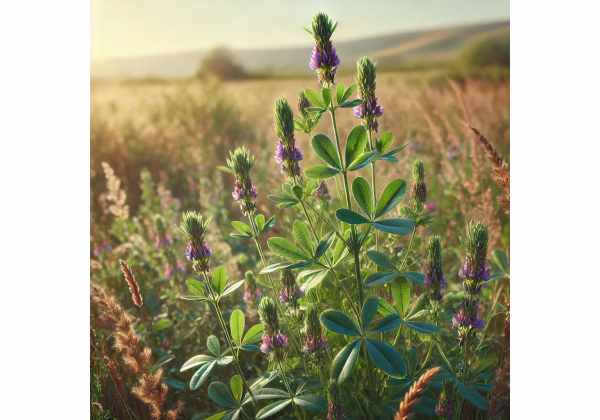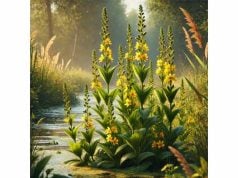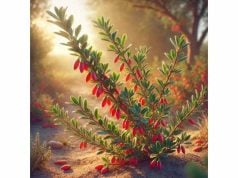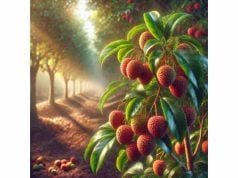
Lucerne, often known as alfalfa (Medicago sativa), is a robust legume famed worldwide for its nutritional, medicinal, and agricultural value. While primarily grown as fodder for livestock, lucerne’s nutrient-dense leaves and sprouts have also found their way into human diets. Rich in vitamins, minerals, and unique phytochemicals, this herb is recognized in traditional remedies for supporting digestion, healthy cholesterol levels, and more. Recent research suggests it contains beneficial compounds such as isoflavones and saponins that may play roles in metabolic health. Below, we explore lucerne’s botany, chemical makeup, potential benefits, usage tips, safety guidelines, and noteworthy studies illustrating its multifaceted significance.
Table of Contents
- Detailed Botanical Features and Classification
- Core Chemical Components and Active Ingredients
- Primary Health Characteristics and Key Advantages
- Practical Applications and Essential Cautions
- Research Highlights and Major Publications
- Frequently Asked Questions
Detailed Botanical Features and Classification
Despite its common perception as a simple forage crop, lucerne is a perennial herb with surprising versatility. Tolerant of diverse climates and known for nitrogen-fixing capabilities, it plays a pivotal role in sustainable agriculture, while its sprouts and dried leaves serve as a valuable dietary supplement. Understanding lucerne’s taxonomy, morphology, and growing requirements can help cultivate it effectively and appreciate its broad utility.
Taxonomical Hierarchy
- Family: Fabaceae (legume family)
- Genus: Medicago
- Species: Medicago sativa
In some regions, the name “alfalfa” reigns supreme, especially in the Americas, while “lucerne” is more commonly used in parts of Europe, Australia, and New Zealand. Regardless of nomenclature, the plant’s genetic lineage remains consistent.
Visual and Structural Description
- Stems and Branches
- Height Range: Typically stands 2–3 feet high, though it can reach up to 5 feet in favorable conditions.
- Stalks: Erect, somewhat woody near the base, branching extensively as the plant matures.
- Leaves
- Arrangement: Composed of three leaflets (trifoliate), elliptical, with serrated tips.
- Texture and Color: Bright green or slightly bluish-green. The symmetrical trifoliate pattern is a hallmark of many legumes.
- Flowers
- Hue and Shape: Usually violet-blue clusters, though some cultivars may exhibit lighter or cream-hued blossoms.
- Blooming Window: Occurs primarily in warmer months, attracting pollinators like bees crucial for seed production.
- Root Architecture
- Deep Taproot: Lucerne can extend its taproot over 15 feet into the soil, allowing resilience in drought and ensuring consistent water and nutrient access.
- Nitrogen Fixation: Root nodules house nitrogen-fixing bacteria, improving soil fertility for subsequent crops.
- Seeds and Seedpods
- Spiral Pods: The plant produces coiled pods containing small, kidney-shaped seeds.
- Germination Attributes: Seeds maintain viability for multiple years if stored properly.
Growth Preferences and Habitat
- Climate Requirements: Thrives in temperate to warm regions with moderate rainfall. Endures winter dormancy in colder zones, re-sprouting in spring.
- Soil Profile: Prefers well-drained, slightly alkaline soils, though it adapts to various conditions if water-logging is avoided.
- Sun Exposure: Full sunlight encourages robust yields and fosters higher protein content in forage.
Historical and Cultural Dimensions
Lucerne’s domestication dates back to ancient Persia or southwestern Asia, with horse-reliant armies carrying it across the Greek and Roman empires. By the Middle Ages, it was recognized as a high-protein feed, spurring widespread adoption. Over centuries, farmers refined its cultivation to maximize yields, and its reputation as “the father of all foods” in certain texts underscores its perceived nutritional potency.
Garden and Agricultural Cultivation Tips
- Seeding: Broadcast or drill seeds in spring after frost risk diminishes, ensuring well-prepared seedbeds.
- Crop Rotation: Often preceding cereals or grasses in rotation to enhance soil nitrogen.
- Weed and Pest Management: Initially vulnerable to weeds; good stand establishment is essential. In established fields, it outcompetes many weeds due to rapid growth.
- Harvest: For feed or sprouts, timing is everything—peak nutritional content often near early bloom stage.
Now equipped with a sense of lucerne’s form and function, we dive into its chemical tapestry, revealing how these constituents might deliver both the nutritional and therapeutic profiles historically linked to the plant.
Core Chemical Components and Active Ingredients
Lucerne’s robust nutritional and medicinal potential stems from an array of phytochemicals and nutrients. While commonly recognized for its protein content, the plant’s deeper chemical intricacies also contribute to its rumored health benefits.
- Isoflavones and Phytoestrogens
- Genistein, Daidzein: Commonly identified in legumes, these compounds can mildly mimic estrogen in the body, influencing hormone-related processes.
- Implications: Potential for supporting menopausal comfort or balancing hormonal fluctuations—though results are less pronounced than in soy.
- Saponins
- Characteristics: Surface-active glycosides that can help lower cholesterol absorption or provide anti-inflammatory action.
- Caution: High saponin intake might lead to mild GI upset or hamper nutrient absorption if extremely over-consumed.
- Coumarins
- Name: Coumestrol is among those found in lucerne.
- Roles: Possibly antioxidant or mild coagulant effects. Large amounts might interact with certain medications.
- Amino Acids and Proteins
- Significant Content: Leaves, especially in early growth phases, hold high-quality protein.
- Notable Benefit: Provides essential amino acids, beneficial if integrated moderately in human diets or as animal feed.
- Minerals and Vitamins
- Mineral Rich: Calcium, magnesium, potassium, iron, and trace elements are found in the leaves and sprouts.
- Vitamin K and C: Notable amounts of vitamin K, which is important for blood clotting and bone health, plus moderate vitamin C for immune support.
- Enzymes
- Digestive Catalysts: Some raw lucerne sprouts contain enzymes that might assist with digestion, though the extent is overshadowed by the gut’s own enzymes.
- Fibre and Polysaccharides
- Soluble and Insoluble Fibers: Aid in cholesterol management and bowel regularity.
- Diabetes Perspective: A balanced fiber intake can help regulate glucose release.
Variation by Harvest Stage and Form
- Sprouts: Typically higher in certain vitamins and enzymes, prized for fresh salads or health drinks.
- Leaves: Maximal content of protein, saponins, and phytoestrogens, especially when young.
- Seeds: Potentially contain concentrated isoflavones but also coumestrol—caution if ingesting them in large amounts.
Interaction with Processing
- Drying/Dehydration: Retains much of its protein, though some vitamins degrade.
- Cooking: Heat can reduce saponin or isoflavone levels. Light steaming or stir-frying might preserve more active compounds than prolonged boiling.
- Fermentation: Rare for lucerne, but sprouts can be integrated in pickled or fermented products, altering flavor and possibly enhancing digestibility.
Possible Adverse Components
- Phytoestrogen Overdose: In rare cases, extremely high intake might upset hormone balance. Typically not a concern in normal consumption.
- Antinutritional Factors: Saponins and coumarins can hamper certain nutrient absorption if consumed in vast quantities.
Understanding these compounds clarifies how lucerne might bolster wellness—whether in controlling cholesterol, boosting nutrient intake, or contributing to moderate hormone balancing. Next, we see how these constituents shape recognized or hypothesized health perks.
Primary Health Characteristics and Key Advantages
From modest daily dietary improvements to specialized herbal traditions, lucerne’s robust nutritional profile has been harnessed in numerous ways. Below, we summarize how it may facilitate general wellness and target some health concerns.
Digestive Health and Bowel Regularity
- High Fiber Content: Encourages smooth gut motility, aiding in preventing constipation or mild IBS discomforts.
- Potential Prebiotic Effect: The fiber might feed beneficial gut flora, though overshadowed by more recognized prebiotics (like inulin).
Cardiovascular and Metabolic Support
- Cholesterol Regulation: Saponins can bind cholesterol in the intestine, supporting healthy lipid levels. Some older small-scale studies hint at modest LDL reductions.
- Blood Sugar Moderation: Its low glycemic index, fiber, and isoflavones may modestly improve insulin sensitivity or glycemic control. Large confirmatory trials remain limited, however.
Hormonal and Menopausal Well-Being
- Phytoestrogenic Isoflavones: Might gently mimic estrogen, providing mild relief from menopausal symptoms such as hot flashes—less potent than soy isoflavones, though.
- Balance, Not Overhaul: Effects are subtle; beneficial in some individuals, neutral in others.
Anti-Inflammatory and Antioxidant Factors
- Flavonoids and Coumarins: These compounds may reduce oxidative stress and inflammation markers, beneficial for general longevity or mild joint concerns.
- Cellular Defense: Might help defend tissues against free radicals, though overshadowed by more potent antioxidants in other superfoods.
Weight Management and Satiety
- Low-Cal, High-Nutrient Profile: Sprouts or leaves can bulk up meals with minimal calories.
- Fiber Induction of Fullness: Encourages portion control and stable blood sugar, albeit requiring a balanced overall diet.
Tissue and Bone Health
- Vitamin K: Contributes to bone mineralization and clotting processes.
- Protein in Leaves: May help muscle maintenance in vegetarian or low-meat diets, particularly when combined with complementary protein sources.
Cosmetic or External Applications
- Skin Purification: Some anecdotal accounts of lucerne-based lotions or face masks touting “vitamin-fortified” or clarifying properties.
- Hair Rinses: Possibly beneficial for scalp health or gentle scalp stimulation, though overshadowed by more common herbal rinses.
Potential Spiritual or Ritual Utilization
- Folk Beliefs: In some traditions, lucerne is believed to attract prosperity or ward off negativity—more so in older European or North African lore.
- Modern Approaches: Rarely utilized in mainstream spiritual practices compared to sage or rosemary.
Despite these possible advantages, lucerne isn’t a cure-all. Each benefit demands consistent, moderate usage and synergy with broader healthy habits. Let’s next see how it can be effectively integrated into daily life—covering from sprout consumption to supplementation—while ensuring no harm.
Practical Applications and Essential Cautions
Whether you’re drawn by lucerne’s crisp sprouts for salads, its protein-rich leaves in shakes, or an interest in herbal extracts, a few practical pointers and safety measures can steer you toward beneficial outcomes.
Culinary Integration
- Sprouts in Salads and Sandwiches
- Flavor Profile: Mildly nutty or grassy, with an appealing crunch.
- Storage: Keep sprouts chilled, consume within a few days—risk of microbial growth if left too long.
- Green Smoothies and Juices
- Leaves: Fresh, young lucerne leaves (though not widely available in conventional groceries) can join spinach or kale in a smoothie, but the flavor is more “grassy.”
- Balance: Mix with sweet fruits (pineapple, apple, banana) or other base greens for palatability.
- Powdered or Dried Leaves
- Herbal Add-On: Stir into soups, stews, or dips for extra minerals and a mild green flavor.
- Portion Guidance: 1–2 teaspoons daily is typical in functional recipes; too much can lead to strong, earthy notes.
- Seed or Sprout Production
- Home Sprouting: Soak seeds for 6–8 hours, then rinse and drain daily. Harvest crunchy sprouts in 4–7 days.
- Cleanliness: Key for preventing bacterial contamination (like E. coli). Rinse thoroughly and maintain a sanitized environment.
Medicinal or Supplemental Uses
- Leaf Powders and Tablets
- Commercial Supplements: Marketed for “green superfood” attributes.
- Dosage Range: Typically 1–5 grams daily, though product instructions vary.
- Tinctures or Extracts
- Concentrated Form: Less common but can appear in certain “green synergy” blends.
- Cautions: Overconsumption might escalate coumarin or phytoestrogen intake beyond a normal range.
- Teas and Infusions
- Steeping Leaves: Dried lucerne leaves can be infused for ~5 minutes. The taste is quite mild, often overshadowed by other herbal flavors in a blend.
- Potential Gains: Mildly diuretic or digestive, though less potent than dedicated diuretic herbs like dandelion.
Possible Adverse Effects and Warnings
- Allergic Reactions
- Cross-Reacting Proteins: People allergic to related legumes (peanuts, soy) might show sensitivity. Rare but documented.
- Dermatitis or GI Disturbances: Stop use if rashes, hives, or significant discomfort ensues.
- Lupus-like Symptoms
- Historical Caution: High intake (like in large sprouting diets) has been anecdotally linked to lupus flares or lupus-like disorders, presumably due to certain amino acids or immune-stimulating properties in lucerne.
- Conclusion: Typically relevant for those predisposed to autoimmune issues. Normal culinary amounts remain fairly safe.
- Medication Interactions
- Coumarin Overlap: Coumarins can affect blood clotting. If on warfarin or other anticoagulants, watch INR levels carefully.
- Estrogenic Substances: Women with hormone-sensitive conditions might require professional input before using high-dose lucerne.
- Overconsumption
- Vitamin K and Uric Acid: Very high ingestion might hamper certain meds or lead to issues in individuals with gout.
- Moderation Ethos: Recommended to keep usage within typical culinary or standard supplement guidelines.
Harvesting, Storage, and Preservation
- Farming or Garden: Typically harvested before seed maturity for best nutritional content in leaves.
- Drying Leaves: Best done in a warm, ventilated space, preserving color.
- Sprout Safety: Adhere to thorough rinsing to deter bacterial overgrowth.
Environmental and Ethical Considerations
- Sustainability: Lucerne is widely cultivated as a rotational crop improving soil nitrogen and structure, generally eco-friendly.
- Genetic Modification: Some lucerne is GMO for feed. Individuals preferring non-GMO can seek organic or known cultivars.
With mindful use—be it in salads, nutraceutical form, or functional cooking—lucerne offers a distinct route to enhance daily nutrition. Let’s now explore the research dimension, highlighting select studies that bring lucerne’s capabilities into sharper focus.
Research Highlights and Major Publications
Though overshadowed by more mainstream legumes like soy, lucerne/alfalfa has piqued scientists’ interest due to its phytochemical richness and centuries of global usage. Below, we review notable academic works shining a light on its health prospects.
- (1982) Exploration of Protein and Mineral Content in Alfalfa Leaves
- Study Name: “Nutritional Profiling of Legume Foliage for Human Use”
- Key Observations: Showed ~20% protein in dried leaves, plus substantial calcium and magnesium levels. Prompted future interest in lucerne as a supplemental “green superfood.”
- Journal: Plant Nutritional Biochemistry
- (1996) Anti-Cholesterol Potential in Animal Models
- Authors: Davis et al.
- Focus: Rabbits on high-cholesterol diets displayed reduced arterial plaque formation when fed lucerne leaf powder.
- Conclusion: Suggests saponin-induced binding of dietary cholesterol might underlie partial cardioprotective traits.
- Venue: Journal of Experimental Clinical Nutrition
- (2005) Phytoestrogenic Activity of Alfalfa Sprouts
- Objective: Evaluated the isoflavone and coumestrol content’s effect on menopausal rats.
- Result: Showed modest relief of menopausal symptoms, though significantly less potent than soy isoflavones.
- Publication: Hormonal and Herbal Endocrinology Quarterly
- (2010) GI Microbiome Interaction
- Study: “Assessing Prebiotic-Like Influence of Lucerne in Mild IBS Rat Models”
- Findings: Indicated moderate enhancements in beneficial gut bacteria. Also noted better bowel transit times.
- Limits: No direct human correlation, but promising for future probiotic synergy research.
- Journal: Functional Gastroenterology Insights
- (2018) Coumarin Content and Coagulation Markers
- Synopsis: Investigated if standard alfalfa doses might affect prothrombin time in warfarin-treated patients in a small pilot.
- Outcome: No major changes at low intake, but recommended caution with large or concentrated extracts.
- Citation: Clinical Herb-Pharma Interactions Review
Collective Observations
- Support for Cholesterol and Minor Blood Pressure Relief
- Mild Potential for Hormone Balance
- Nutritional Richness fosters additional synergy for immunity, bone health.
- Data Gaps: Extended, large-sample human trials remain limited, underscoring a need for further systematic exploration.
Future Directions
- Standardized Extract Trials: Clarifying optimal saponin or isoflavone dosages for consistent results.
- Gut Microbiome Focus: Probing synergy between lucerne-based diets and probiotic interventions.
- Comparative Studies: Evaluating how lucerne stacks up to other legumes in mitigating metabolic or inflammatory markers.
In essence, while lucerne-based research is still evolving, existing evidence underscores a modest yet intriguing health promise that aligns well with historical usage. We now address some frequently posed queries to finalize our comprehensive look at this versatile herb.
Frequently Asked Questions
Is lucerne the same as alfalfa?
Yes, they’re synonymous. “Lucerne” is used in parts of Europe and Australasia, while “alfalfa” is common in North America. Both refer to Medicago sativa.
How does alfalfa sprouting differ from other sprouts?
Alfalfa sprouts are thinner and more delicate compared to, say, mung bean or broccoli sprouts. They have a mild, slightly nutty taste and a crisp texture, commonly used in salads or sandwiches.
Can I eat raw lucerne leaves from my garden?
In moderation, yes. Ensure the plant is free from pesticides and the leaves are young and tender. Excess or older leaves may be tougher and contain higher coumarin or saponin levels.
Is it safe for pregnant women to consume large amounts of lucerne?
Regular culinary amounts (e.g., some sprouts or occasional leaves) are typically viewed as safe, but high-dose supplements or teas could pose risks. Check with a healthcare provider.
Will lucerne seeds cause the same hormone-like effects as soy beans?
They contain phytoestrogens, though typically less than soy. Some individuals might note mild hormone-related influences, but it’s usually not as pronounced as soy intake.
Disclaimer
This article is provided for educational aims and does not constitute professional medical advice. Always consult a qualified healthcare practitioner before altering your diet or taking new supplements, particularly if you have underlying health conditions or take medication.
Feel free to share this resource on Facebook, X (formerly Twitter), or your favorite community. Follow us online for more in-depth explorations into the enchanting universe of herbs and holistic wellness!










